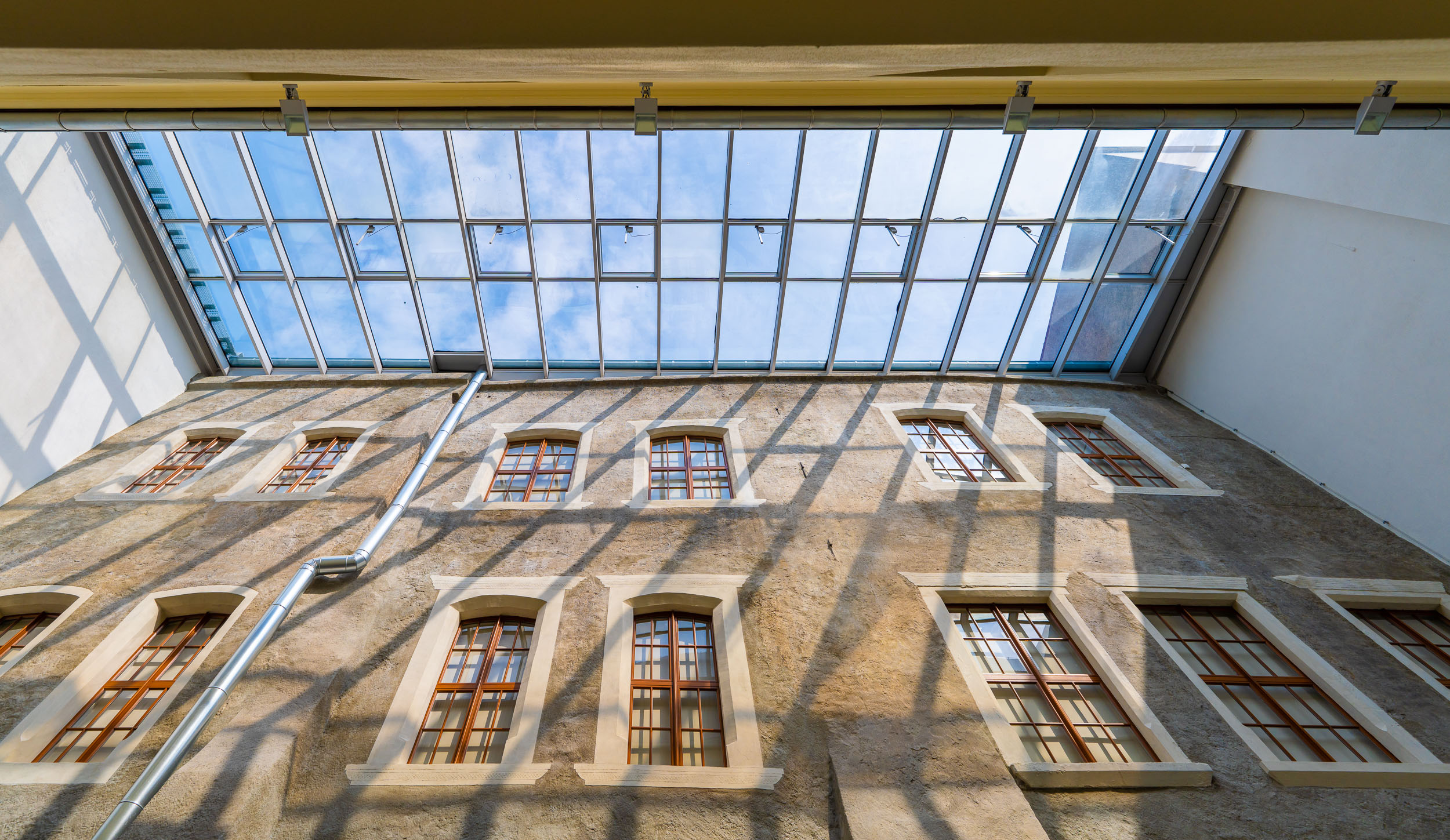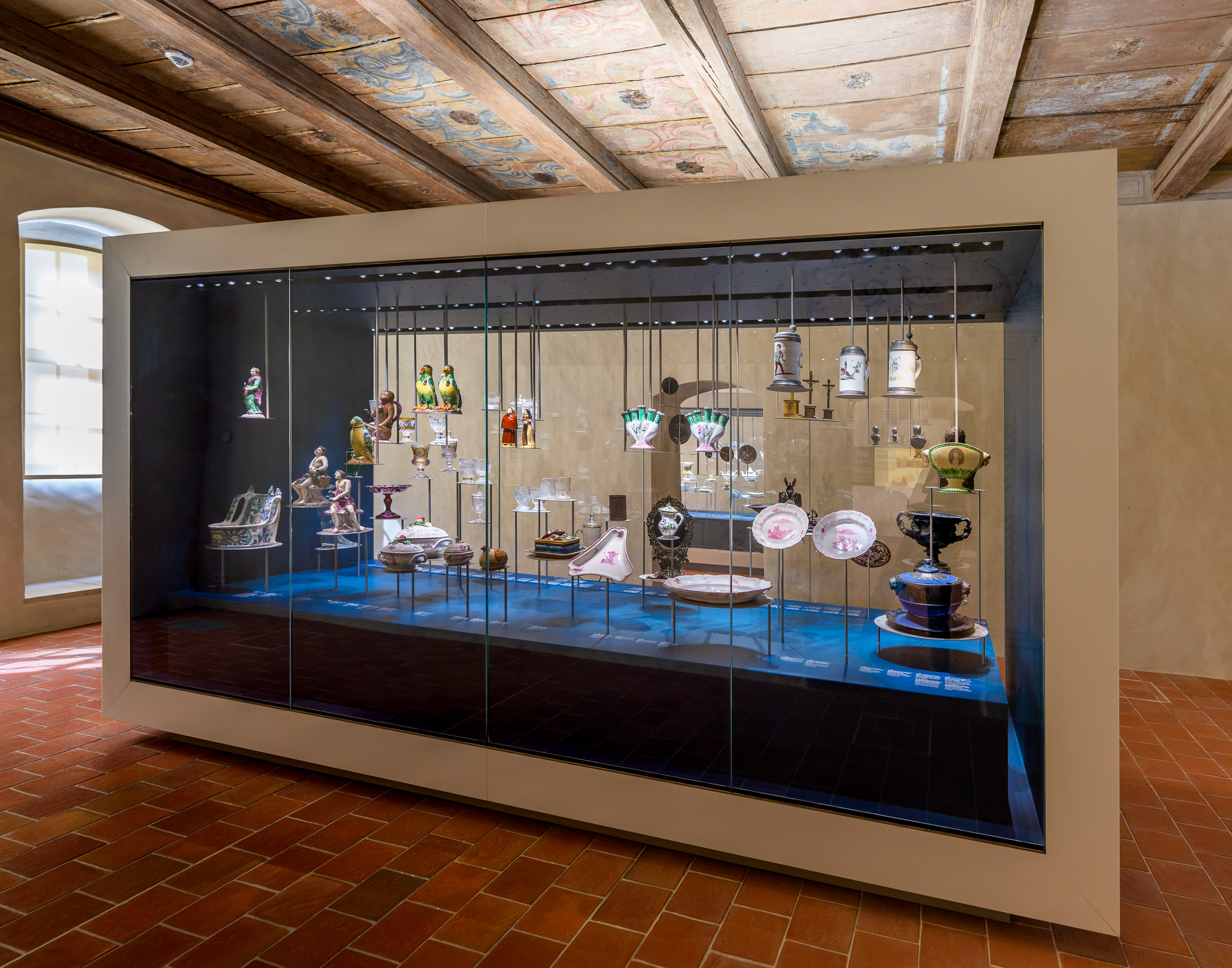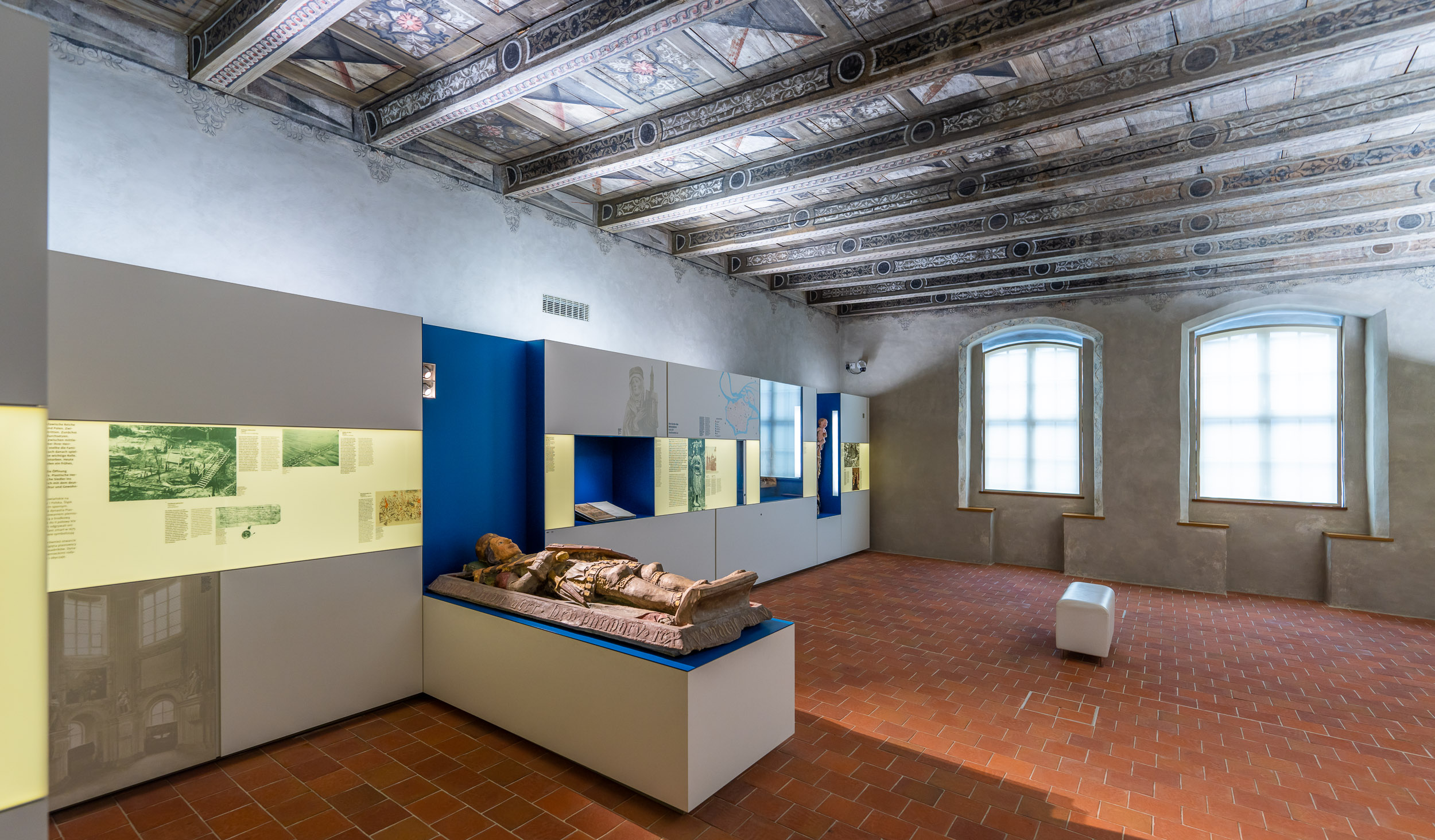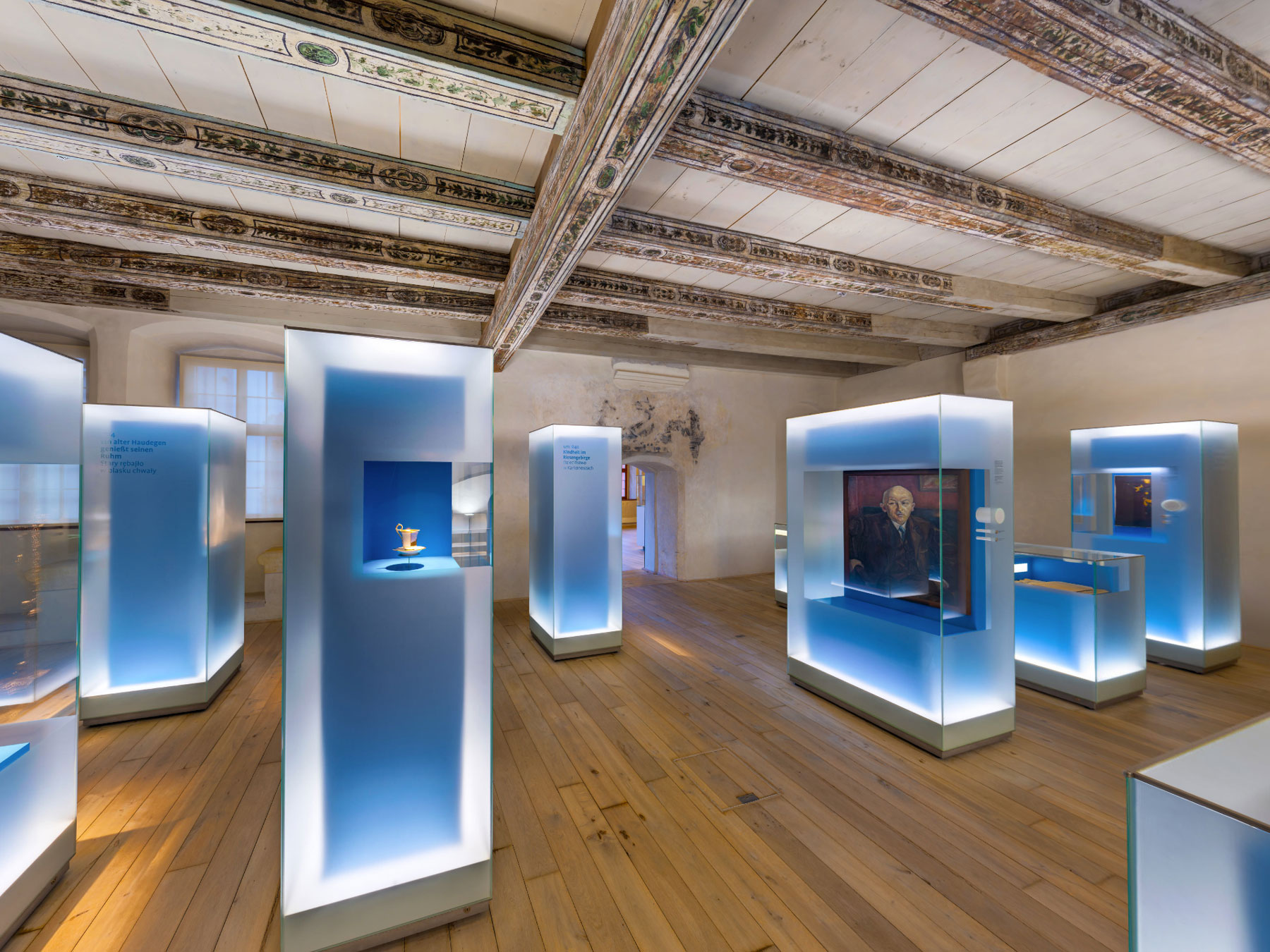
Sgraffito façade in the atrium
Photographs
Decorative plaster based on the Italian model
The rear façade of the Schönhof dating from the reconstruction period after 1525 is probably the oldest example of Italian-style sgraffito decoration (scratched plaster) in Upper Lusatia: Finely smoothed plaster edgings around the window openings imitate the outlines of sandstone walls, are set off against the darker plaster of the walls and create a three-dimensional illusion.
Today, the atrium of the museum has a glass roof and connects the Schönhof building with the Mittelhaus and the Fischmarkthaus.
The multimedia exhibition “Silesia since 1945” can be seen here. It is the continuation and extension of the permanent exhibition opened in 2006 and uses around 800 photos and numerous films to tell the story of Lower and Upper Silesia after the Second World War. It provides in-depth insights into Silesia, which is largely Polish today, but also looks at how the displaced Silesians fared in Germany over the past decades.
While adults can explore the content using tablets and a media wall, the topic comes to life for younger visitors on the “children’s island” with games, books, animated films and puzzles.
See similar attractions!
On a 2000 m2 exhibition space, visitors can explore approximately 1000 exhibits from the history of Silesian culture.
)
)
)
)